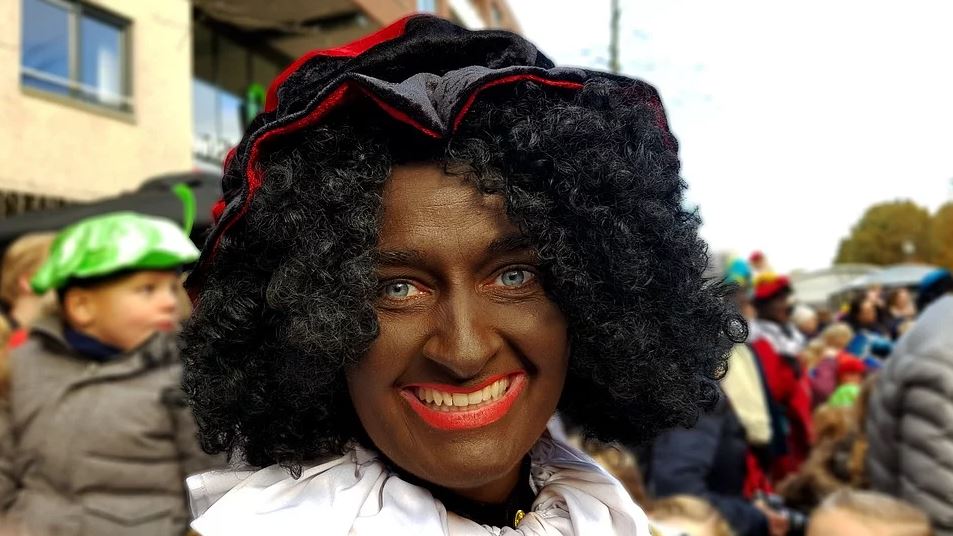The figure of Zwarte Piet, which translates as ‘Black Pete’ in English, is a controversial topic of discussion around the holiday period in Belgium and The Netherlands, but what is the story behind the diverse figure?
In the traditional Winter holiday story of Sinterklaas, who is said to visit children's homes to bring presents and treats on the evening of 5 December in the Netherlands and on 6 December in Belgium, his helper, Zwarte Piet, has been a topic of controversy for several decades.
Across both countries, hundreds of adults and children dress up as him. Impersonators don blackface and black curly wigs, painting large red lips, and often large golden earrings to complete the look.
It is this character, and the traditional depiction, which has continued to draw criticism from within Belgium and the Netherlands, but also from across the world, calling the tradition racist and inappropriate, especially from two countries with a violent colonial past.
Every year around the holiday period, news outlets from all around the world dedicate articles, opinion pieces and analysis to the character and the controversy surrounding him, trying to explain the phenomenon.
In 2011, world-famous model Doutzen Kroes said in a talk show that she felt ashamed of being Dutch around the Sinterklaas period, saying Zwarte Piet was "no longer appropriate in this day and age" and that she had no idea how to explain it to black people. American rappers The Game, Trey Songz and Waka Flocka took to social media to make their displeasure about the tradition known, with the last rapper even vowing to stop performing in the Netherlands until the Zwarte Piet tradition was abolished. In November, American reality TV star Kim Kardashian even said the "Zwarte Piet tradition was disgusting".

Sinterklaas and his helper, Zwarte Piet. Credit: Wikipedia
The story goes...
According to the story, hundreds of Zwarte Piets live with Sinterklaas in his castle in Spain and prepare gifts for all children who have been good. When in Belgium and the Netherlands, the Zwarte Pieten deliver the right presents to children who have been good throughout the year according to Sinterklaas’ Book, in which stories about all children are collected.
In older versions of the story, once Zwarte Piet’s sack of toys was empty, he would fill it back up with naughty children to take back to Spain, or hit them with his birch rod. Where Zwarte Piet used to be portrayed as a bogeyman, he is now more of a playful friend.
The exact origins of the story are vague, but many historians agree that it was Jan Schenkman, a schoolteacher from Amsterdam, who first published an image of the character of Zwarte Piet in an illustrated book, 'Sint Nikolaas en zijn Knecht' (Saint Nicholas and his Servant) in 1850. The character was introduced in a time when the Low Lands was still deeply engaged in slave trade.
... but the countries want to change
Within the countries where Zwarte Piet is a cherished childhood figure, a war is going on to maintain tradition while keeping up with the times.
Minorities in the Netherlands have been protesting the character of Zwarte Piet for several decades, with a Dutch magazine introducing a 'White Pete Plan' to counter the what they called "racist and colonial stereotypical figure" first in 1968.
An ongoing art project that started in 2011, called 'Zwarte Piet is racism', re-opened the discussion when it gained media attention across the country. Since then, the debate transformed into a polarised conflict that revolves more around the extent to which a tradition that is perceived by some as offensive needs to be adapted or maintained.
In Belgium, the Centre for Equal Opportunities and Opposition to Racism concluded in 2014 that the image of Zwarte Piet was not discriminatory. However, the centre did call for debate and asked organisations "to not present the figure of Zwarte Piet as a stupid, subordinate or dangerous black man."

The Soot Petes do not have any of the characteristics that could be perceived as racist.
Most children nowadays are told that Zwarte Piet is black because he enters homes through the chimney to deliver presents, meaning he is actually a (white) man who is just dirty from all the soot clinging to him.
As many Zwarte Piet-opponents felt that that could explain the blackness of his face, but not the curls, the big red lips, the golden earrings or the fact that Zwarte Piet’s clothes were not covered in soot, they created the Roetpiet (‘Soot Pete’, in Dutch) as an alternative that would not be perceived as racist.
The Roetpiet’ faces are not painted entirely black, but are partly covered in black smudges or soot. They typically do not wear wigs, red lipstick or big golden earrings.
The controversy around Zwarte Piet resurfaces every year in Belgium and the Netherlands around the holiday period, with opponents saying it is a racist and out-of-date practice that has no place in the 21st century. Proponents point out that it is not meant as a racist practice and that it is simply tradition.
However, since the first protests against Zwarte Piet in 2011 in the Netherlands, there is no clear outcome yet as to the future of this divisive figure.
Maïthé Chini
The Brussels Times

